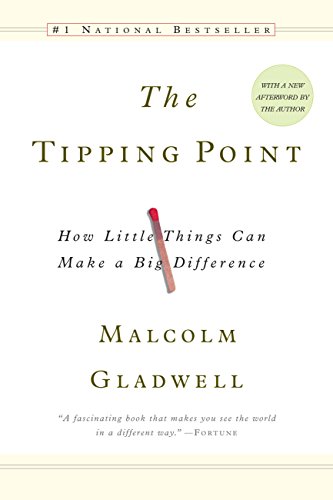

This article is an excerpt from the Shortform summary of "The Tipping Point" by Malcolm Gladwell. Shortform has the world's best summaries of books you should be reading.
Like this article? Sign up for a free trial here .
What effect do negative role models have on kids? How do “permission-givers” affect children and teens when it comes to smoking?
We’ll explore why negative role models can be so influential. Understanding the mechanisms behind this influence may be the first step toward change.
The Law of the Few and Negative Role Models
The Law of the Few undoubtedly played a part in tipping the teen smoking epidemic. Teen smoking is a prime example of how Salesmen can make a behavior contagious by playing the role (sometimes inadvertently) of permission-givers for something as harmful as smoking. A permission-giver is a negative role model. In spite of anti-smoking messaging insisting that the habit is unattractive and uncool, many people have deep-seated associations of cigarettes with sophistication. Often, people think of a smoker from their childhood who exuded a sort of carefree coolness. Knowingly or not, those smokers become permission-givers, or negative role models.
The archetype of smokers as cool rebels is actually no coincidence, as research shows that there are common personality traits among smokers that include extroversion, sociability, sexual precocity, impulsivity, risk-taking, defiance, and indifference to the opinions of others. Many of these are the kinds of traits that make a person seem impossibly cool, especially to teenagers.
Smokers aren’t cool because they smoke, but rather smoke because they are cool; the traits that make these teens prone to smoking happen to be the same traits that make them seem cool to peers. But no matter the reasoning, the association — and its power to influence others to smoke — remains the same. People’s memories of sophisticated family members, older friends, or celebrities (permission-givers) smoking make them want to emulate their cool by taking up the habit as well, overpowering health information and logical self-preservation. All of these permission-givers are negative role models.
Example: Negative Role Models and Suicide
Permission-givers played a role in a teen suicide epidemic in the small island nation of Micronesia. The epidemic seemed to have tipped with the well-publicized suicide of a teenage boy named R., who was a member of one of the island’s wealthiest families. Stuck in a love triangle with two women — one of whom he had a child with — he ultimately hung himself.
R. became the permission giver (or negative role model) to other adolescent boys who committed suicide, almost always by hanging, as a result of similar romantic and family strife (most of which was fairly trivial and typical of the teen experience). The concept of using suicide as an expression of wounded pride and sadness (in much milder forms than the despair we typically associate with suicide) became epidemic; in the early 1960s there were virtually no suicides in Micronesia, but by the late 1980s the country had more suicides per capita than anywhere in the world.
The Stickiness Factor and the Addiction Threshold
Permission-givers, or negative role models, may inspire people to try cigarettes, but the stickiness of the habit itself determines whether they will continue smoking long term. Smoking isn’t dangerous when you try it just once or twice; it becomes harmful the more you smoke and the longer you maintain the habit.
Nicotine is addictive only to some people, and among those people it is addictive to different degrees, likely based on their genetic tolerance for nicotine. Research shows that your experience with your first cigarette is the biggest single factor in whether or not you become a habitual smoker; people who are turned off immediately likely have little to no tolerance for the nicotine.
———End of Preview———

Like what you just read? Read the rest of the world's best summary of "The Tipping Point" at Shortform . Learn the book's critical concepts in 20 minutes or less .
Here's what you'll find in our full Tipping Point summary :
- What makes some movements tip into social epidemics
- The 3 key types of people you need on your side
- How to cause tipping points in business and life






